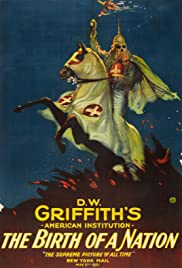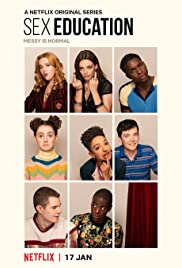By Kayla Schoelkopf and Taylor Smith
When you turn on the TV or see a movie, it makes you feel like you are a member of society to find people on the screen who look like you. However, minority groups are very upset to see such little representation in Hollywood. Constituting approximately 40% of the United States population as of 2017, minority groups just aren’t given the representation they deserve (UCLA Hollywood Diversity Report, 2019). The Hollywood film industry pumps out thousands of movies per year with great plots and actors, but the one thing they are constantly under scrutiny for is their lack of diversity and minority representation.
Upon looking into this problem, one can see that the statistics support the claim that minorities are severely underrepresented, and when they are, oftentimes their characters confirm certain stereotypes (Lee, 2016). An example of this is found in the Netflix show All American, where stereotypes about African Americans are strongly confirmed. In the show, a young black high schooler is seen getting in fights at school, is associated with gang violence, and was raised by a single black mother whose husband left.
The Representation Problem
According to the 2019 UCLA Hollywood diversity report, only 2.2 out of 10 lead actors in film are people of color. Also in Women, Men and the media we learned that minorities account for 11 percent of leads in films, however they account for 36 percent of the U.S population. Today, over half of the films in Hollywood are cast with less than 10% minority actors, yet 7.6% of films are written by minorities.
As anyone can see by these statistics, minorities are not given the representation and spotlight they deserve and have not for a long time. This misrepresentation can lead to many secondary issues because a good chunk of the population is not being shown on screen! What does this tell us about minority groups? It shows that they are unimportant and leads them to view themselves as such.
This also causes their stories and life struggles to be taken away or hidden because they are not getting a platform to discuss them. Again, as I mentioned before, even if they are getting representation, their stories are turned into stereotypes, and they are bunched together as a “people” instead of individuals. This is the problem we are going to address.
Examples
In the Hollywood film industry, movies lack racial and gender diversity. In more recent years society has recognized this as a more serious issue. Why are films that primarily feature white people recognized more and nominated for more awards? Parasite, a foreign-language South Korean film received very little recognition for the incredible actors who participated in the making of the award-winning movie (Izadi, 2020). Just because they have an all Asian cast does not mean that their film should be credited any less.
For decades the industry has mostly hired white actors and actresses to play the lead roles in films. They have even been cast to play black characters, Hispanics, Asians, or Native Americans in movies. For example, the 1961 classic Breakfast at Tiffany’s cast Mickey Roony, a white male, to play an iconic Japanese neighbor. He was characterized by his stereotypical accent, yellow-tinted skin, and bucky teeth (Simons, 2016).

In addition, Blackface was a very popular practice in Hollywood where they would cast a white character to play a black person and paint their skin black for that role. One of the most popular movies that Blackface was used in, was the 1915 film called The Birth of a Nation. This was a three-hour movie about the Civil War era and the racism that separated the north and south. It cast a large number of white people who were disguised in Blackface to play the part alongside actual African Americans (Lee, Y., 2017). The trend of underrepresenting minorities has been around since the beginning of film, but with society evolving the way it has been these last few decades, the world has noticed we need to be more inclusive.
Getting it Right: Sex Education
Aside from minorities being severely underrepresented in Hollywood and media, another large community who receives little to no screen time are those in the LGBTQ community. However; a TV show that gives lots of screen time to representing diverse individuals and their life experiences is Sex Education on Netflix. Not only does this show have a racially diverse cast, but it also gives light to real problems instead of tip-toeing around them.
This show exhibits what real life is like in 2020 for cisgender, queer, heterosexual and homosexual people, and does not fail to cover up real problems that adolescents face even though they may be part of an uncomfortable social conversation. In this show, there is a main character, Eric, who is black and gay, who enjoys dressing up as a woman and wearing makeup.
There is also an Asian, lesbian character and a bisexual school bully (Shadijanova, 2019). At the root, this program is unapologetic and showcases a wide range of sexual orientations, including those that are seldom talked about. This show has gotten lots of positive feedback from its viewers.
In an article by The Sundial, the author says “Compared to other forms of movies and TV shows, the way that they tackle sex and sexuality is vastly different from the way “Sex Education” handles the technique of the “uncomfortable birds and the bees” talk in a way that isn’t awkward in the first place”(Magee,2019).
The ‘uncomfortable topics’ that this show tackles include gender fluidity, lesbians, pansexuals, asexuality and they bring up other important topics such as mental health and female masturbation. An especially important scene was the opening scene for season 2 where the main character, Otis, who is a “late bloomer” as some call it, experiences masturbation for the first time. Scenes like this can be uncomfortable to watch, but it is so important to show because many other individuals might feel they are late bloomers as well or feel dirty for doing something as natural as this. I think the directors tackled this scene well because they made it realistic yet comedic and paired with the perfect music, I think this scene serves a great purpose.
This show is a step in the right direction, but we can keep going to ensure that minorities are no longer underrepresented in film. This can start by signing petitions and facing this problem head-on. Further call to action is by watching shows like Sex Education, and others that have a very diverse cast to help give more representation.
References
Bernstein, P. (2014, February 25). The Diversity Gap in the Academy Awards in Infographic Form. Retrieved from https://www.indiewire.com/2014/02/the-diversity-gap-in-the-academy-awards-in-infographic-form-29628/
Erbland, K. (2018, July 31). Hollywood Loves Talking Diversity, But New Study Finds Women, Minorities, and LGBTQ Are Underrepresented On Screen. Retrieved from https://www.indiewire.com/2018/07/hollywood-diversity-study-women-minorities-lgbt-representation-1201989496/
Izadi, E. (2020). The Oscars nominated “Parasite” but looked right past its all-Asian cast. It’s part of a pattern. https://www.washingtonpost.com/arts-entertainment/2020/02/07/parasite-oscars-asian-actors/
Lee, S. G. (2016, August 2). The lack of diversity in the film industry. Retrieved from https://highschool.latimes.com/palos-verdes-peninsula-high-school/the-lack-of-diversity-in-the-film-industry/
Lee, Y. (2017, December 7). A History Of Blackface In Films, In All Its Incarnations. Retrieved from https://www.huffpost.com/entry/history-of-blackface_n_4175051?guccounter=1&guce_referrer=aHR0cHM6Ly93d3cuZ29vZ2xlLmNvbS8&guce_referrer_sig=AQAAAM9E-Pg0HVDZF1gJEl2ttME-lbc-mNujnVkE4ERUIz2INgUPmiMXdMI2xSi1MUV9g7IDVzg0hE1Q4WnuV6t6U8LhRzB-3fr1XhPGS1v_wiOJWfAuE62BdD9jZBWhi297Jq_lUzHS0VtYd1zK-PrX6D4xcFF4O-c52EI8_iWu1eqA
Lou, M. (n.d.). Hollywood Has Made ‘No Progress’ On Diversity In Over A Decade, Study Finds. Retrieved from https://www.huffpost.com/entry/hollywood-diversity_n_5b605fc1e4b0de86f49af757?guccounter=1&guce_referrer=aHR0cHM6Ly93d3cuZ29vZ2xlLmNvbS8&guce_referrer_sig=AQAAAIM8263oQomaH4KxCoWKZAYYIPtuiQlMOAgqyj9Jw63ikZi5jwW5n_tQmV54KUbImsk2c-oyhp8QyVsDZyBB7_QqPVbVOzOigqeZodxJQrDyLxalAb-1iNU6mMWBkscbR_zMbrHQ7wlnJuVifG6RhQfkGxDxPqkbIBFAQ3-cAFDW
Magee, D. (2019, January 22). Discussing the impact of Netflix’s “Sex Education”. Retrieved from https://sundial.csun.edu/141822/arts-entertainment/discussing-the-impact-of-netflixs-sex-education/
Shadijanova, D. (2019, January 18). Sex Education’s unapologetic diversity is what makes it so powerful. Retrieved from https://thetab.com/uk/2019/01/17/sex-education-netflix-diversity-89932
Simons, M. (2016, January 28). 100 times a white actor played someone who wasn’t white. Retrieved from https://www.washingtonpost.com/posteverything/wp/2016/01/28/100-times-a-white-actor-played-someone-who-wasnt-white/

